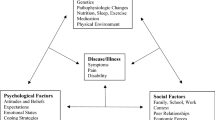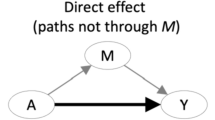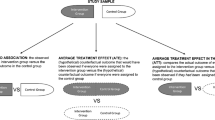Abstract
Background: Because risk perceptions can affect protective behavior and protective behavior can affect risk perceptions, the relations between these 2 constructs are complex and incorrect tests often lead to invalid conclusions.Purpose: To discuss and carry out appropriate tests of 3 easily confused hypotheses: (a) the behavior motivation hypothesis (perceptions of personal risk cause people to take protective action), (b) the risk reappraisal hypothesis (when people take actions thought to be effective, they lower their risk perceptions), and (c) the accuracy hypothesis (risk perceptions accurately reflect risk behavior).Methods: Longitudinal study with an initial interview just after the Lyme disease vaccine was made publicly available and a follow-up interview 18 months later. Random sample of adult homeowners (N = 745) in 3 northeastern U.S. counties with high Lyme disease incidence. Lyme disease vaccination behavior and risk perception were assessed.Results: All 3 hypotheses were supported. Participants with higher initial risk perceptions were much more likely than those with lower risk perceptions to get vaccinated against Lyme disease (OR = 5.81, 95% CI 2.63-12.82, p < .001). Being vaccinated led to a reduction in risk perceptions, χ2(1, N = 745) = 30.90, p < .001, and people vaccinated correctly believed that their risk of future infection was lower than that of people not vaccinated (OR = .44, 95% CI .21-.91, p < .05).Conclusions: The behavior motivation hypothesis was supported in this longitudinal study, but the opposite conclusion (i.e., that higher risk led to less protective behavior) would have been drawn from an incorrect test based only on cross-sectional data. Health researchers should take care in formulating and testing risk-perception-behavior hypotheses.
Similar content being viewed by others
References
Conner M, Norman, P:Predicting Health Behavior: Research and Practice with Social Cognition Models. Philadelphia: Open University Press, 1996.
Weinstein ND: Testing four competing theories of health behavior.Health Psychology. 1993,12:324–333.
Sutton SR: Social-psychological approaches to understanding addictive behavior: Attitude-behavior and decision-making models.British Journal of Addiction. 1987,82:355–370.
Gerard M, Gibbons FX, Bushman BJ: Does perceived vulnerability to HIV motivate precautionary sexual behavior? A critical review of the literature.Psychological Bulletin. 1996,119:390–409.
van der Pligt J:Perceived risk and vulnerability as predictors of precautionary behavior.British Journal of Health Psychology. 1998,2:1–14.
Ronis DL, Harel Y: Health beliefs and breast examination behaviors: Analysis of linear structural equations.Psychology and Health. 1989,3:259–285.
Weinstein ND, Rothman AJ, Nicolich M: Use of correlational data to examine the effects of risk perception on precautionary behaviors.Psychology and Health. 1998,13:479–501.
Weinstein ND, Nicolich M: Correct and incorrect interpretations of correlations between risk perceptions and risk behaviors.Health Psychology. 1993,12:324–333.
Gail MH, Brinton LA, Byar DP, et al.: Projecting individualized probabilities of developing breast cancer for white females who are being examined annually.Journal of the National Cancer Institute. 1989,81:1879–1886.
Lipkus IM, Biradavolu M, Fenn K, Keller P, Rimer BK: Informing women about their breast cancer risks: Truth and consequences.Health Communication. 2000,13:205–226.
Centers for Disease Control and Prevention: Recommendations for the use of Lyme disease vaccine: Recommendations of the Advisory Committee on Immunization Practices.Morbidity and Mortality Weekly Report. 1999,48:RR-7: 1–25.
Steere AC, Sikand VK, Meurice F, et al.: Vaccination against Lyme disease with recombinant Borrelia burgdorferi outer-surface lipoprotein A with adjuvant. Lyme Disease Vaccine Study Group.New England Journal of Medicine. 1998,339:209–215.
Author information
Authors and Affiliations
Corresponding author
Additional information
The study was supported by a grant from SmithKline Beecham, Inc. This article was presented at the 2001 Annual Conference of the Society for Behavioral Medicine, Washington, DC. We thank Edward B. Hayes for his help with the study and Meg Gerrard for her helpful comments on a draft of the article.
About this article
Cite this article
Brewer, N.T., Weinstein, N.D., Cuite, C.L. et al. Risk perceptions and their relation to risk behavior. ann. behav. med. 27, 125–130 (2004). https://doi.org/10.1207/s15324796abm2702_7
Issue Date:
DOI: https://doi.org/10.1207/s15324796abm2702_7




